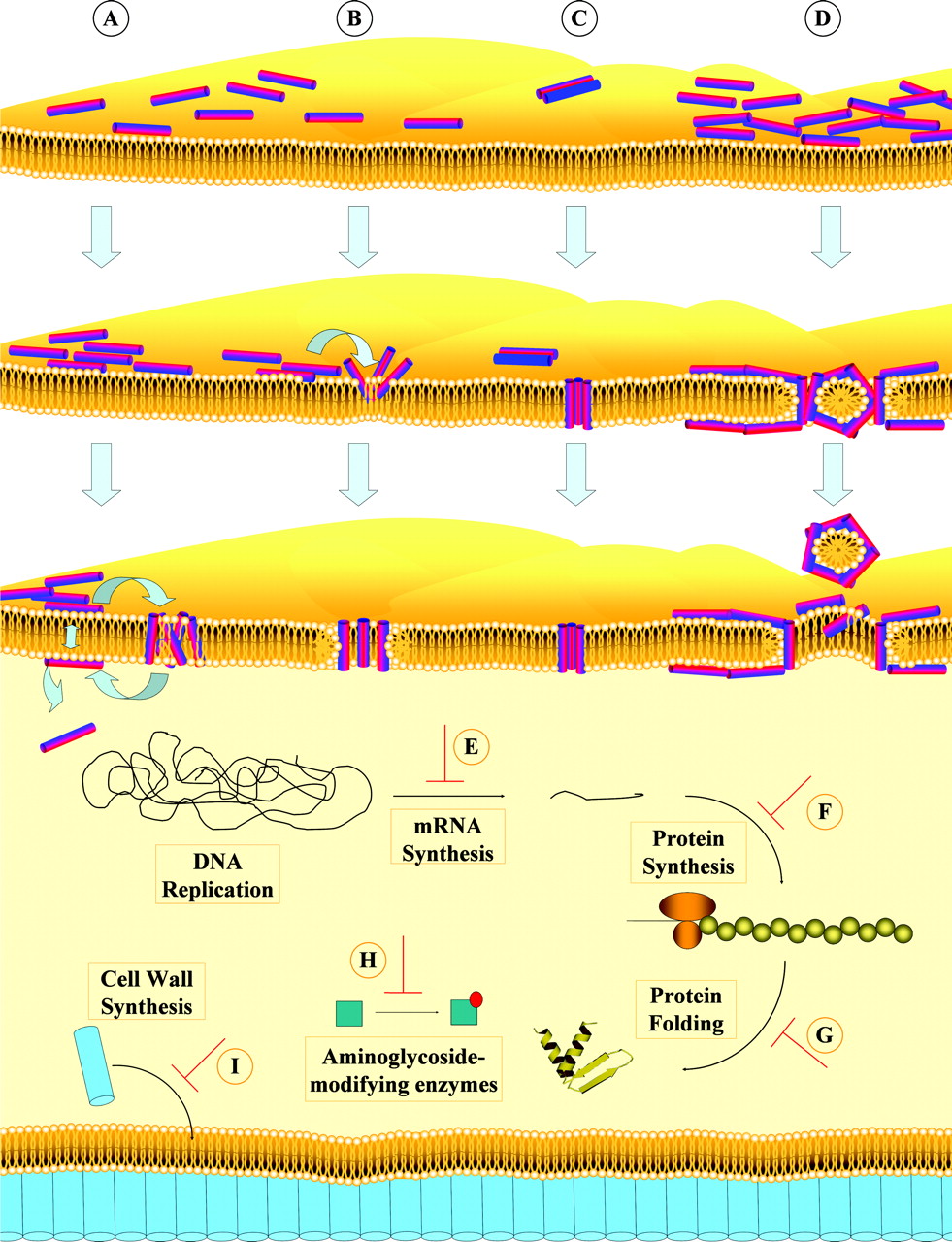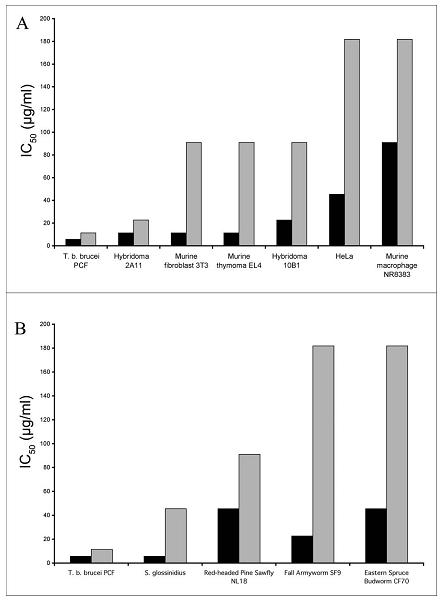|
|
BMAP-18
A Modified Bovine Host Defense Peptide
BACKGROUND: Tropical diseases caused by parasites continue to cause socioeconomic devastation that reverberates worldwide. There is a growing need for new control measures for many of these diseases due to increasing drug resistance exhibited by the parasites and problems with drug toxicity. One new approach is to apply host defense peptides (HDP; formerly called antimicrobial peptides) to disease control, either to treat infected hosts, or to prevent disease transmission by interfering with parasites in their insect vectors. A potent anti-parasite effector is bovine myeloid antimicrobial peptide-27 (BMAP-27), a member of the cathelicidin family. Although BMAP-27 is a potent inhibitor of microbial growth, at higher concentrations it also exhibits cytotoxicity to mammalian cells. We tested the anti-parasite activity of BMAP-18, a truncated peptide that lacks the hydrophobic C-terminal sequence of the BMAP-27 parent molecule, an alteration that confers reduced toxicity to mammalian cells.
METHODOLOGY/PRINCIPAL FINDINGS: BMAP-18 showed strong growth inhibitory activity against several species and life cycle stages of African trypanosomes, fish trypanosomes and Leishmania parasites in vitro. When compared to native BMAP-27, the truncated BMAP-18 peptide showed reduced cytotoxicity on a wide variety of mammalian and insect cells and on Sodalis glossindius, a bacterial symbiont of the tsetse vector. The fluorescent stain rhodamine 123 was used in immunofluorescence microscopy and flow cytometry experiments to show that BMAP-18 at low concentrations rapidly disrupted mitochondrial potential without obvious alteration of parasite plasma membranes, thus inducing death by apoptosis. Scanning electron microscopy revealed that higher concentrations of BMAP-18 induced membrane lesions in the parasites as early as 15 minutes after exposure, thus killing them by necrosis. In addition to direct killing of parasites, BMAP-18 was shown to inhibit LPS-induced secretion of tumour necrosis factor alpha (TNF-alpha), a cytokine that is associated with inflammation and cachexia (wasting) in sleeping sickness patients. As a prelude to in vivo applications, high affinity antibodies to BMAP-18 were produced in rabbits and used in immuno-mass spectrometry assays to detect the intact peptide in human blood and plasma.
CONCLUSIONS/SIGNIFICANCE: BMAP-18, a truncated form of the potent antimicrobial BMAP-27, showed low toxicity to mammalian cells, insect cells and the tsetse bacterial symbiont Sodalis glossinidius while retaining an ability to kill a variety of species and life cycle stages of pathogenic kinetoplastid parasites in vitro. BMAP-18 also inhibited secretion of TNF-alpha, an inflammatory cytokine that plays a role in the cachexia associated with African sleeping sickness. These findings support the idea that BMAP-18 should be explored as a candidate for therapy of economically important trypanosome-infected hosts, such as cattle, fish and humans, and for paratransgenic expression in Sodalis glossinidius, a bacterial symbiont in the tsetse vector, as a strategy for interference with trypanosome transmission.
Haines et al. PLoS Negl Trop Dis. 2009;3(2):e373. Epub 2009 Feb 3.

Figure 6. Inhibition of LPS-induced TNF-a secretion from human PBMC by BMAP-27 and BMAP-18. PBMC were incubated with 5 mg/mL of BMAP-27 or BMAP-18 for 30 minutes before treating with highly purified Pseudomonas aeruginosa lipopolysaccharide (10 ng/mL). After 4 hours, TNF-a was measured in the supernatants by ELISA. Gray bar: PBMC incubated with LPS alone. Black bars: PBMC incubated with BMAP-27 or with BMAP-18. The asterisks indicate the responses after treatment with LPS (p,0.01 comparing LPS alone to LPS+peptide). Three complete biological replicates were performed and the standard errors are shown.
Haines et al. PLoS Negl Trop Dis. 2009;3(2):e373. Epub 2009 Feb 3.

Figure 3. Comparative effects of BMAP-27 and BMAP-18 on growth of mammalian and insect cell lines. Inhibition assays using alamarBlue (as described in Materials and Methods) were performed on a variety of cell lines grown in vitro. A range of concentrations of peptide was tested against all cell lines. The concentrations of peptides required for 50% inhibition (MIC50) are shown. A representative parasite, T. b. bruce 427.01 PCF, treated under the same conditions, is included to indicate the marked difference in peptide concentrations required for inhibition of parasite and mammalian cell lines. Panel A: Mammalian cell lines. Panel B: Insect cell lines. Black bars: BMAP-27; Gray bars: BMAP-18. The result
shown are representative of three individual experiments performed over a one year period.
Haines et al. PLoS Negl Trop Dis. 2009;3(2):e373. Epub 2009 Feb 3.
|
|
|
%012-28%;%012-29%
|
|
|


